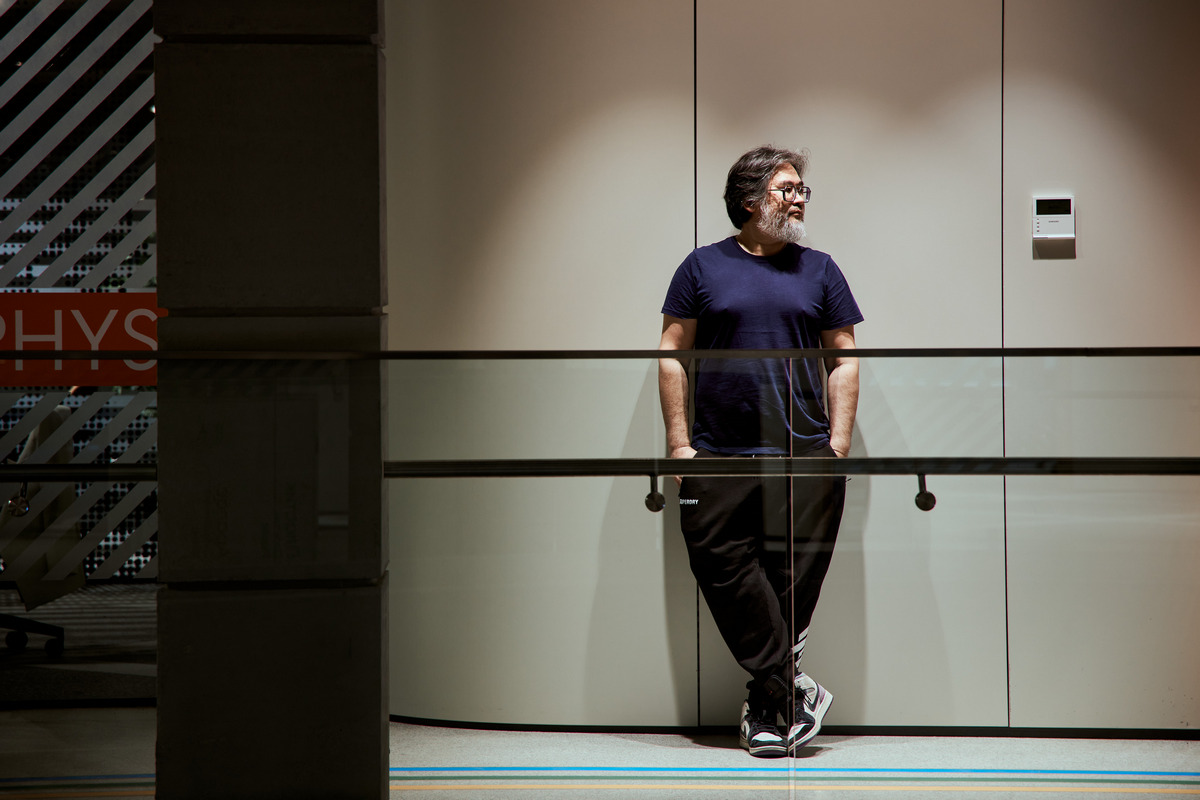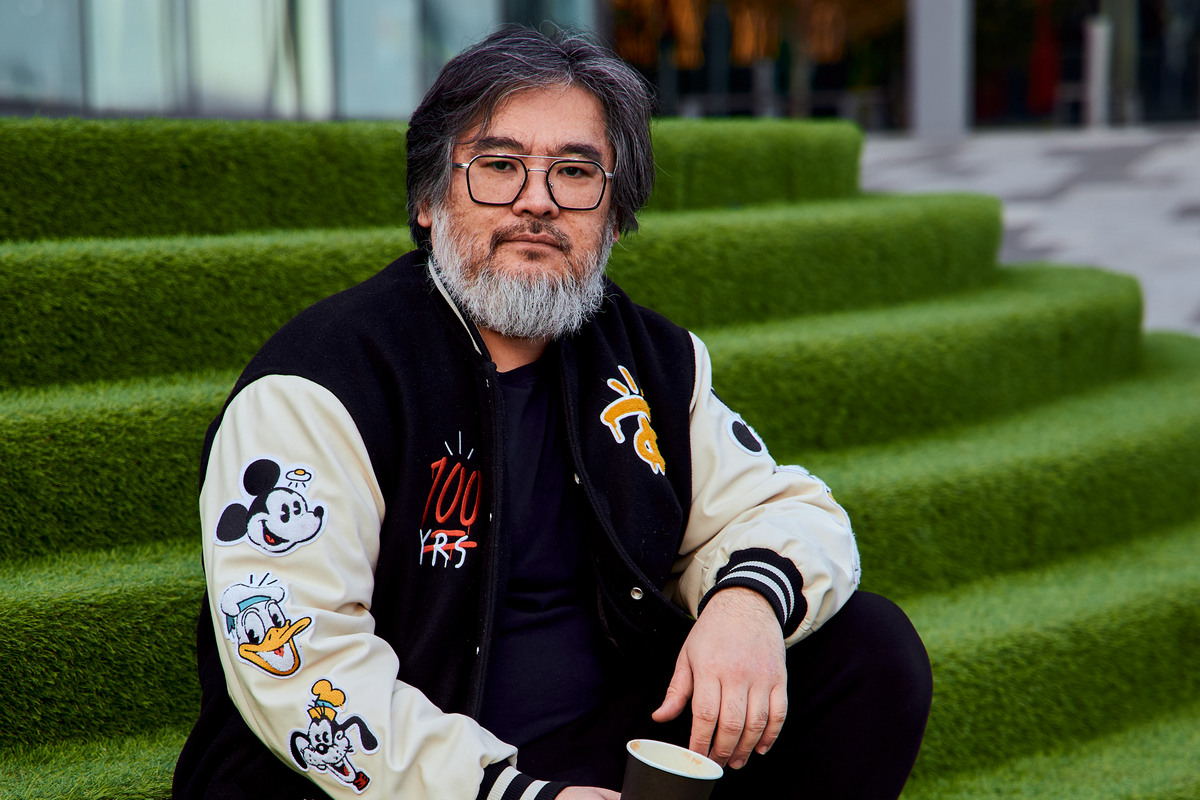Is your child spending hours staring at a smartphone? A Kazakh startup aims to tackle children's gadget addiction

Baglan Ayazbayev and Lana Dikanchieva, a married couple, have dedicated two years to developing the educational application for children called Smart Zebra (formerly OILA). Initially, their goal was to create a product that could steer children towards studying anatomy or history instead of simply watching cartoons. However, their current aim is more ambitious: to overcome children's addiction to gadgets. Paradoxically, they plan to achieve this goal through a mobile application.
In an interview for the collaborative initiative by Digital Business and Astana Hub, titled "100 Startup Stories of Kazakhstan," Baglan discusses why parents harbor concerns yet still provide smartphones to their children. Additionally, he explores how the educational application aims to outshine YouTube.
250 Subscribers To Fine-Tune the Model
— After university, I worked as a hired employee for only two years. In the early '90s, working at the bank was beyond my dreams. However, it was challenging for me. I branched out on my own and never looked back. I became an entrepreneur, working as a music promoter and engaging in event management and media production. Subsequently, my wife pursued studies to become a Montessori teacher, leading us to open a kindergarten under Montessori pedagogy, and later, a primary school.

During the coronavirus pandemic, I began contemplating the need for something scalable, regardless of location. At that moment, I didn't foresee that it would involve digital products. Unfamiliar with startups and the ecosystem, I stumbled upon Steve Blank’s “The Startup Owner's Manual.” Inspired, my wife and I initiated work on the application. We later joined Astana Hub, participated in the startup battle at Digital Bridge 2022, and engaged in various acceleration programs. That's how it all commenced — we evolved into startup entrepreneurs.
— Please detail the phases through which the startup progressed.
— The initial testers for our application were our own children, followed by the children of our friends. This process helped us ascertain whether the product held interest for anyone. Subsequently, we aimed to determine if there was a market for it. We introduced the application on the App Store with a paid subscription, and individuals within our network (warm contacts) made purchases.
What is Smart Zebra?
It is a mobile application designed to entertain and educate children without fostering addiction. The owners assert that, unlike cartoons and mobile games, Smart Zebra promotes speech development, broadens children's horizons, and enhances intellectual growth.
Following that, we participated in Digital Bridge, where we showcased our product at the Startup Alley. Surprisingly, even those unfamiliar with us expressed a willingness to purchase the application. This marked the beginning of offline sales.

Subsequently, we initiated trial advertising campaigns to assess the viability of selling the application through such means. We experimented with various options, and while not all of them proved successful, we achieved a positive unit economy: the difference between the client's profit contribution (LTV) and the cost of acquiring them was two times. Currently, we are in the stage of enhancing our effectiveness and aiming to increase this difference to three times.
— What is the user count of your application?
— We've accumulated over a thousand installations in total, but our count focuses solely on paying clients. Currently, we have 250 active users, primarily based in Kazakhstan.
We could have initiated additional advertising campaigns and boosted the subscription numbers, but our objective differed. Instead of focusing on sales, we aimed to model a positive unit economy, refine it, and enhance its appeal for potential investors.
I believe that achieving 250 subscriptions is a reasonable outcome, considering our modest testing advertising budgets.
Mitigate Gadge Addiction Using the Aid of Gadgets
— What sources of funding does the startup rely on for its development? How far can the money from 250 subscribers sustain the operations?
— The funds from subscriptions currently account for approximately a quarter of our startup expenses, with the remaining portion covered by earnings from our traditional business.
In the earlier stages, we adopted a more conservative approach to startup development—focusing on understanding the product demand and refining the model. Rather than simply presenting our idea as groundbreaking, we, coming from a traditional business background, sought to comprehend the workings of the model and potential earnings.
Now, having identified a scalable idea, we are prepared to accelerate our efforts.
— What opportunity did you identify?
— During the Silkway Accelerator, we conducted numerous interviews with parents and concluded that modifications to our product were necessary. Initially, we developed a well-rounded educational application for children, but now we aspire to create a platform that assists children in avoiding gadget addiction. This is a global issue today; parents face the challenge of not being able to entirely restrict children from gadgets. Simultaneously, without a smartphone, children refuse to eat and may even throw tantrums.

This is why we currently employ the Montessori methodology and integrate its principles in digital form. Our aim is to provide a child with freedom, avoiding prohibitions and limitations, all within an organized and secure environment where no harm can occur. Our goal is to enable parents to confidently give a smartphone or tablet to their child, ensuring that the child will not encounter inappropriate content and will not develop a smartphone addiction. In essence, we seek to prevent and halt gadget addiction through the use of a gadget.
— How? At times, it appears that the only solution is to simply refrain from giving gadgets altogether…
— The issue of addiction has little to do with the child or the gadget itself. It's more a matter of cultural adaptation: we mastered the use of a fork and knife long ago, but with gadgets, people are still on the journey of developing a similar cultural understanding.
What do children predominantly engage in on their phones? Watching cartoons on YouTube. However, it's crucial to recognize that YouTube is a social network that generates revenue through advertisements. To maximize ad exposure, the platform aims to keep viewers in front of the screen for as long as possible. This means that all algorithms are designed to achieve prolonged screen time. Even as adults, we struggle to resist the magnetic pull of screens, and for children, who have limited critical control functions, the challenge is even more significant.
Moreover, engaged video watching triggers a quick release of dopamine, which is much more challenging to attain in real-life scenarios. Children lose interest in playing outside with a ball or engaging in learning activities because they can easily obtain dopamine from their smartphones. This is how gadget addiction develops.

Our concept involves establishing a secure digital environment where content and algorithms are not geared towards maximizing engagement. The goal is to enable a child to turn on their phone, watch for 30 minutes, switch it off, and seamlessly continue with their activities without any stress.
This is why, on one hand, we incorporate interactive books, videos, learning activities, games, and various other content into Smart Zebra. On the other hand, we are developing functionality that allows a child to transition to other applications, ensuring control over screen time, the permitted number of sessions per day, and more.
Another crucial element, without which the entire endeavor would lack meaning, is educating parents. It is essential for them to comprehend how gadget addictions operate and why they should resist yielding to a child's request to access YouTube or TikTok. Therefore, we will integrate courses for parents into our platform to provide a comprehensive solution.
— However, when a child attends kindergarten or school, where peers engage in games like Roblox and Minecraft and watch YouTube bloggers, they will inevitably request to watch those instead of Smart Zebra...
— Initially, our focus was on children aged 4-9 years, but this narrowed our audience to preschoolers exclusively. Up to a certain age, a child remains within the parent's sphere of influence, and exposure to Minecraft comes later during socialization with other children.

As a child enters school, they become independent users of their devices, and parents have limited control. In the preschool period, it's the parents who manage and control the children's gadgets. During this time, children are willing to watch any content made available to them. For instance, one parent shared an experience of showing their child a video of an excavator digging the ground, and the daughter watched it not necessarily because she had a particular interest in construction works, but because children have open minds, and the content presented influences the outcomes.
Our objective is to cultivate a healthy culture in children from an early age regarding the use of gadgets and consumption of content. This is especially important when parents have more opportunities for control, and the child is less socialized. To put it simply, if a child grows up accustomed to eating chips and snacks, those habits are likely to persist. However, if they are introduced to nutritious food from an early age, these patterns are likely to remain throughout their life. While they may occasionally indulge in chips later on, the likelihood is significantly reduced.
Furthermore, we gained another insight from interviewing moms and dads: there are few conscious and proactive parents actively seeking good content for their children. However, the problem of gadget addiction is highly prevalent. Almost every adult who provides gadgets to their child tends to perceive themselves as inadequate parents. This situation instills concerns and anxiety among moms and dads.
Previously, we mentioned that Smart Zebra's concept is akin to a calm mom handing a gadget to her child. Today, we've come to realize that what truly brings her peace is knowing that this action will not foster addiction in her child.
Dinosaurs and the Human Body Are Among the Top
— From where do you source content for your application?
— We generated all the content from the ground up, and it proved to be the most resource-intensive aspect. Over the course of two years, we independently crafted over a thousand audio files and animations. We persistently create new content, and recently, we introduced a segment on financial literacy, covering topics such as the source of money, how adults earn money, and how to manage finances, among others.
My wife is responsible for recording all the voice files. Additionally, we have a team of copywriters, animators, and a sound producer.

— Are all of them employed by the startup?
— No, only Lana and I work full time. We also have a dedicated developer who consistently collaborates with us.
Our eldest daughter is studying in London, and she assists us with financial models and investor communication. The rest of the team functions as freelancers, but we maintain a consistent client relationship with them.
— Which sections in the application are the most popular?
— Out of the ten topics available, the content related to the human body and dinosaurs is most beloved by children.
— Is there content available in the Kazakh language within the application? Is there a demand for it?
— Initially, our focus was on the Kazakhstani market, which is why nearly all content (excluding the three most recent topics) is available in the Kazakh language. It's challenging to determine whether there is a specific demand for it; rather, it is deemed essential to be available in the local language.
We are aware that many individuals consume our content in Kazakh. There is even a boy from Uzbekistan who has watched all the topics in Russian and has now begun to watch them in Kazakh. His mother has contacted us, requesting an Uzbek version because the boy has started learning Kazakh words.
— How do you feel about incorporating AI to, for instance, respond to children's questions?
— There's a recognition that this aspect needs to be reconsidered and explored. I am not entirely certain if AI has advanced sufficiently to meet our objectives.
As of now, our immediate plans do not include the integration of AI. However, as we acquire more resources, it will undoubtedly become necessary to incorporate AI to stay abreast with global advancements.

$100,000 for content and promotion
— You mentioned your readiness for accelerated scaling. Is financial investment required for this?
— Yes, we refrained from seeking investments initially as we aimed to ensure the idea was genuinely prepared for rapid growth. Presently, we are in discussions with two Kazakhstani investors, and we have initiated the first round with a target of $100 thousand.
Primarily, we intend to utilize this funding for content development. While we would proceed with it regardless, the investments will considerably expedite the process.
Secondly, we aim to initiate promotions and advertising. This will enable us, at this stage, to expand in terms of turnover and profitability, using our earnings as a continual source of development.
Our revenue model is akin to that of game development, and with effective management of creatives and advertising, substantial growth becomes feasible.
—Are there any plans to enter additional markets and localize content in the languages of those countries?
— Strategically, we are currently uncertain about our next moves. Perhaps, initially, we need to focus on growth within the Russian-speaking market.
Subsequently, when we have adequate time and resources, we will commence the localization process. Our priorities are English and Arabic languages. Upon completing the translation, we plan to conduct advertising tests to gather data and explore these markets.

Competing with YouTube, not with Educational Applications
— Who are your competitors?
— Our main competitor is YouTube. Globally, statistics indicate that about 73% of children watch cartoons on their gadgets, roughly 18% play games, and only 6% use educational applications. Rather than targeting the 6% niche, our goal is to position ourselves among the 73%.
— Will you be able to compete there?
— Certainly, parents express a multitude of dissatisfaction and concerns about YouTube. For instance, a child might start watching channels and then use inappropriate language with their sibling. This arises from YouTube, where anyone can upload whatever they want. In essence, by allowing your child to access YouTube, it's akin to letting them take a stroll not within a secure and gated area with controlled access, but rather in an open market in the nearby residential neighborhood. The question then becomes, what might they encounter or bring back from there?
The crucial aspect is to help parents recognize the importance of providing a safe environment for their children.
— This would necessitate incorporating a substantial amount of additional content, including cartoons and games…
— Certainly. Considering our current limitations in terms of vision and art, we envision involving young and talented teachers in the distant future. They would be tasked with creating content for our platform and, in return, receive a portion of the earnings based on the view count.
— What is your vision for your startup in the coming years?
— It will undoubtedly evolve into a global company with a product available in numerous languages. Despite English being the international language, it is essential to provide preschoolers with content in their native languages.
As for our future operations, whether we pursue an IPO or opt for acquisition leading to an exit, that is not a current priority. The crucial focus is on transforming the culture of gadget use, and we believe we can achieve success in this endeavor.


